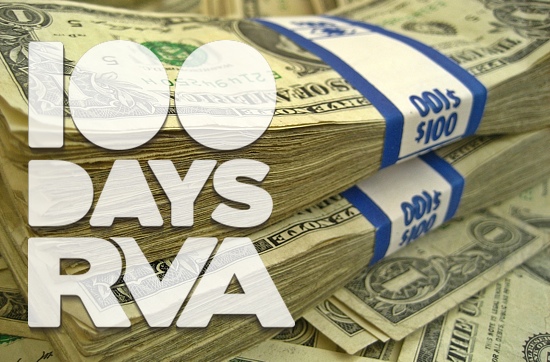Day #044: Taxes, tips, and the benefit of using cash
How 3%-4% adds up to $300-$400 of customers’ money, plus a whole lot of inconvenience.

Inspired by Michael Bierut’s 100 Day Project, 100 Days to a Better RVA strives to introduce and investigate unique ideas to improving the city of Richmond. View the entire project here and the intro here.
- Idea: Include taxes in prices in order to encourage the use of cash so consumers can save money .
- Difficulty: 2 — Adoption would be sparse at first, but a culture change without legislation could lower transaction costs.
Individuals use credit and debit cards for a wide variety of reasons. For some, it subconsciously removes the burden of purchase: that emotional feeling that comes with parting from a few dollars. For others, it lowers the amount of cash and more importably change they need to carry.
No matter the reason, the decision to use plastic comes at a cost to all consumers. Credit and debit cards provide an incredible service: instant money almost anywhere. To finance this service, companies have to pay interchange fees to card-issuing banks and assessments to card companies like Visa and MasterCard. Increasing the percentage of transactions paid for with cash would be the easiest way to lower the burden on merchants and limit costs passthrough to customer.
In 2013, a $7.25 billion settlement allowed vendors to add surcharges up to 4% on card transactions to cover the interchange and assessment fees. Vendors and media went into a frenzy.
We are not interested in surcharging customers in order to allow credit card companies to continue charging unfair fees.Walmart
The funny thing is, customers pay this fee regardless of whether it’s explicitly stated or not. While the cost of transaction fees show up on businesses reports and in increased management labor, the true incidence is passed onto customers who pay higher prices.
State law requires that sales tax be separately added, but listing both prices would save merchants and customers money. Instead of listing the price at $3.71 ($3.57 to the store and $0.14 in card fees) and charging $4.11 with tax for a cup of coffee. Businesses could list the price as $3.63/$4.00. The businesses would save a little extra money and save plenty of time, and customers would pocket an additional $0.11.1
This approach is common in Europe. The ability to pay with even increments for a coffee or a beer without the burden of opening a tab would benefit customers and businesses–imagine having to open up a tab on the streets of Amsterdam or in a relaxing cafe in Rome.
Taking this one step further, restaurants could adopt no tipping policies. The Packhouse Meats restaurant in Newport, Kentucky adopted that policy. Instead, Packhouse servers earn $10 per hour or 20% of their individual food sales per shift, whichever is larger. This would further lower transaction costs while protecting servers from customers who leave tiny tips on huge bills.
— ∮∮∮ —
If an individual buys $10,000 worth of goods from a store over the course of a year using a credit or debit card, $300-$400 leaves the city to pay interchange and assessment fees. These companies provide a valuable service: money anywhere, anytime; however, this cost is excessive and usually unacknowledged by customers. How many people would pay $300 every January for this right? This change is small and circuitous, but it’s a step in the right direction in an industry controlled by legislation.
Love this idea? Think it’s terrible? Have one that’s ten times better? Head over to the 100 Days to a Better RVA Facebook page and join in the conversation.
Photo by: 401(K) 2013
- The exact savings depends upon the fraction of revenue currently paid for by cards. ↩
-
Recommend this
on Facebook -

Report an error
-

Subscribe to our
Weekly Digest





There are 2 reader comments. Read them.